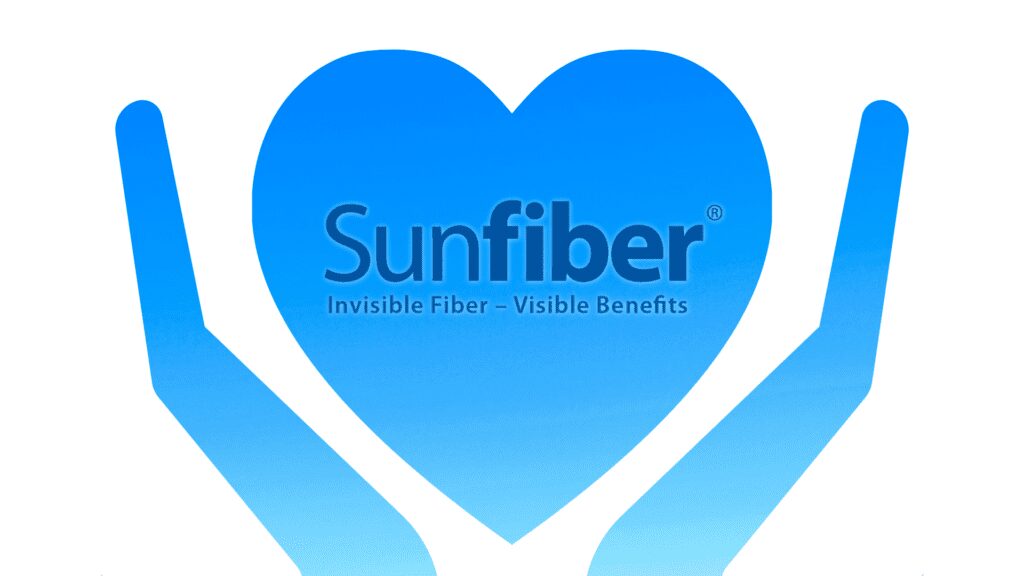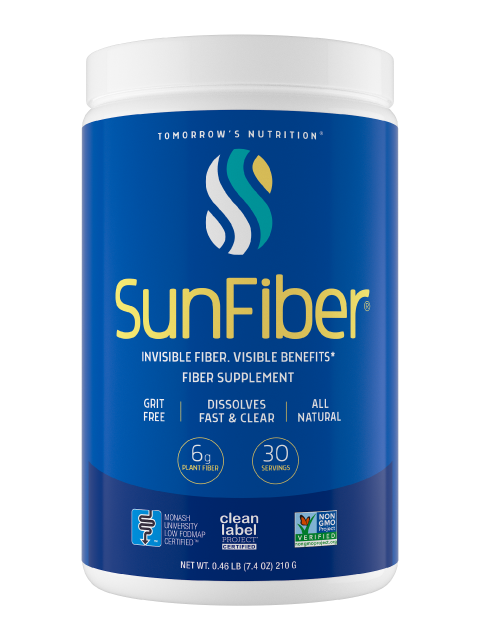Heart disease is the leading cause of death in the United States, so taking steps towards a heart-healthy lifestyle may be a priority for many. Diet and cardiovascular health are strongly connected. Honor American Heart Month by taking better care of your heart with a fiber-rich diet.
Fiber is typically associated with digestive regulation and gut health, but research shows fiber may help improve cholesterol levels and lower your risk of heart disease and stroke.
Eating fiber-rich foods may also help you manage your weight, which may keep your heart healthier by reducing your risk of developing conditions such as diabetes or high blood pressure. Fiber helps with weight management by improving satiety, thus reducing the number of calories you need to feel full.
How much fiber do you need? The recommended daily fiber intake is 38 grams for men and 25 grams for women. But many people aren’t getting enough daily fiber.
An easy way to increase your fiber is with Sunfiber: a safe, effective prebiotic fiber that can be added to soups, sauces, baking mixes or your favorite noncarbonated beverages. Sunfiber dissolves easily without changing the taste, texture, color or odor of your food or drink, making it an effortless way to add more fiber to just about anything.
And consider adding these fiber-rich foods to your diet:
- Whole grains. Good news for popcorn lovers! Whole grains such as popcorn as well as whole wheat, oats, and brown rice are a great source of natural fiber. A serving of whole grains is equivalent to one slice of whole-wheat bread, one cup of whole-grain cereal, five whole-grain crackers or 3 cups of unsalted popcorn. (Kick up your popcorn’s flavor with your favorite herbs and spices.)
- Fruits and vegetables. Adding a side of vegetables to your dinner or a serving of fruit to your breakfast is an easy way to make your meal more heart-healthy and rich in fiber. Have some green beans with tonight’s meatloaf, include a salad with lunch and sprinkle some berries on your morning cereal.
- Beans. Winter brings cravings for cold-weather favorite meals such as chili and hearty soups. Beans ramp up the fiber and nutrition. Beans can also be eaten as a side dish or pureed into dips and spreads.
- Nuts and seeds. Foods high in sugar and salt may be bad for your heart. Replace unhealthy snacks such as chips and cookies with heart-healthy nuts and seeds. Almonds, pecans, walnuts and sunflower seeds are all high in fiber. Eat them by themselves or add them on top of muffins or cookies.
Changing your meal planning to include these fiber-rich foods might not be feasible for everyone. You can still enjoy your favorite meals and recipes while increasing your fiber with Sunfiber. Keep it on your kitchen counter and easily add more heart-healthy fiber to your next meal.



0 Comments